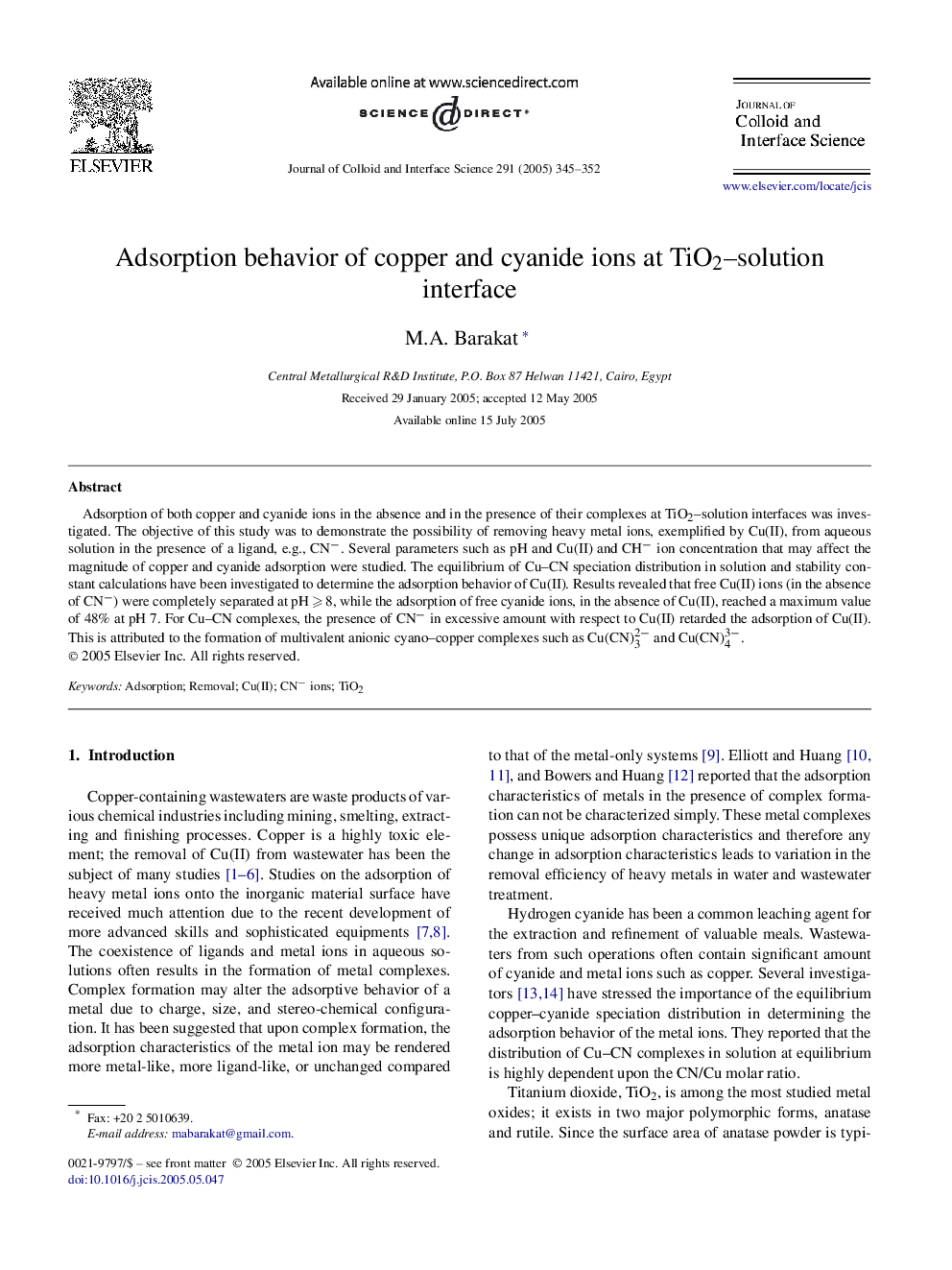| Article ID | Journal | Published Year | Pages | File Type |
|---|---|---|---|---|
| 10377548 | Journal of Colloid and Interface Science | 2005 | 8 Pages |
Abstract
Adsorption of both copper and cyanide ions in the absence and in the presence of their complexes at TiO2-solution interfaces was investigated. The objective of this study was to demonstrate the possibility of removing heavy metal ions, exemplified by Cu(II), from aqueous solution in the presence of a ligand, e.g., CNâ. Several parameters such as pH and Cu(II) and CHâ ion concentration that may affect the magnitude of copper and cyanide adsorption were studied. The equilibrium of Cu-CN speciation distribution in solution and stability constant calculations have been investigated to determine the adsorption behavior of Cu(II). Results revealed that free Cu(II) ions (in the absence of CNâ) were completely separated at pH⩾8, while the adsorption of free cyanide ions, in the absence of Cu(II), reached a maximum value of 48% at pH 7. For Cu-CN complexes, the presence of CNâ in excessive amount with respect to Cu(II) retarded the adsorption of Cu(II). This is attributed to the formation of multivalent anionic cyano-copper complexes such as Cu(CN)2â3 and Cu(CN)3â4.
Keywords
Related Topics
Physical Sciences and Engineering
Chemical Engineering
Colloid and Surface Chemistry
Authors
M.A. Barakat,
